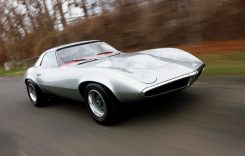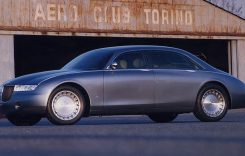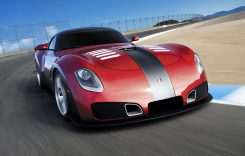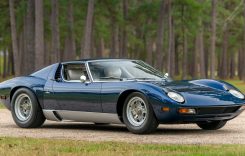The uniqueness of the Devon GTX stems from its carbon fiber structure and the architectural surfaces that are part of its bold design. There is also the tactility and the technologies inside it that make it unlike any other. From stem to stern, the Devon GTX is made of carbon fiber having the same quality as that found in most aircraft.

As such, the model’s ultra-performance capability is made even clearer. This is made possible with the compact and aggressive proportions with the center-lock and lattice-structure wheels measuring up to 20 inches. The exterior has been designed to give a look that combines science fiction with historical pieces. It does this by cleverly mixing curves, exquisite shapes, muscle, plus vibrant graphics. The result is that the Devon GTX gets a classical yet rather futuristic look that is more than capable of withstanding the rigors of time.
The interior has racing seats that have been reinforced with carbon-fiber. The interior’s surface uses a generous span of dual-grained leather. Finally the chrome trims follow its philosophy of “less is more”. The gear lever has a neo-retro look and is topped with the white gear knob.
The framework of the Devon GTX is one that can be considered as advanced for the automotive industry. Its shape initially gives it the appearance of a typical muscle car due to the short front, the rear offsets, and the rather long dash-to-axle.
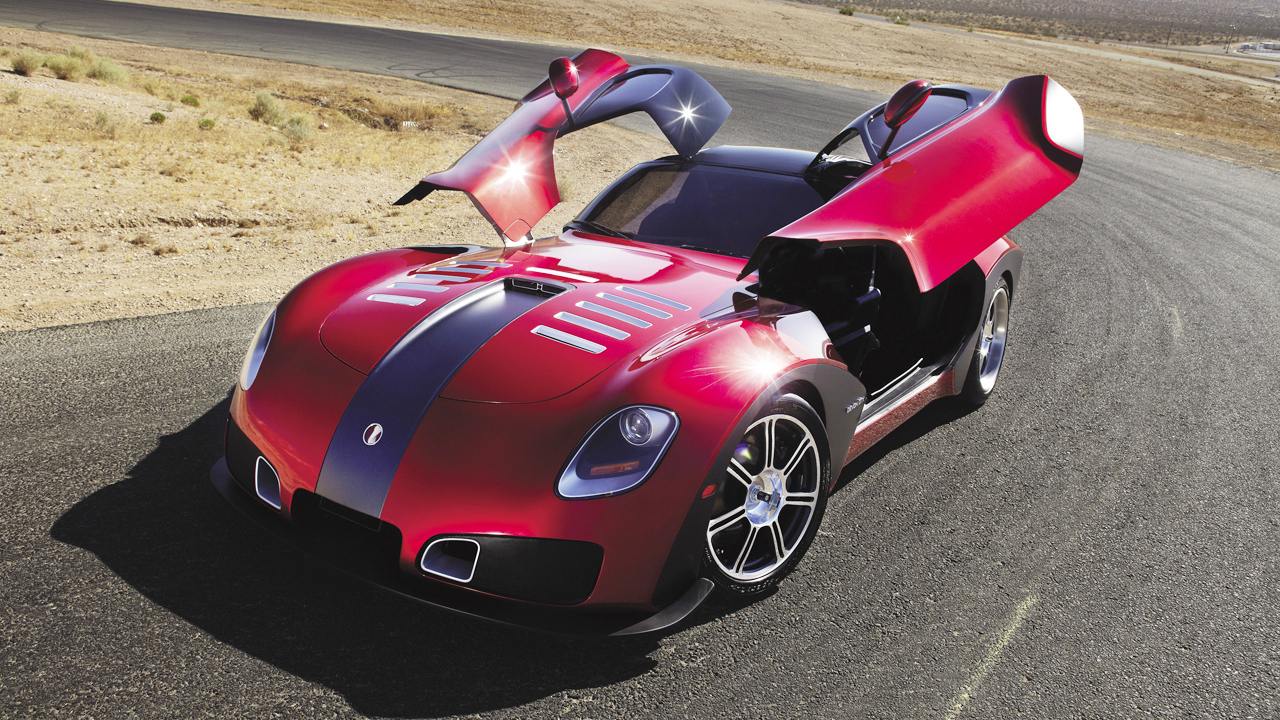
However the way everything was executed gives the Devon GTX an air of sophistication and grace. The carbon fiber body looks as if it was formed from a single housing. Still, it is because of this that the closures, panels, and even the exterior fenders are molded instead of being stamped.
For its 12-spoke monoblock aluminium wheels, buyers can choose between 18/19-inch ones or the 19/20-inch version. Regardless of which combination to choose, its lattice structured wheels is near the rotors and the ultra-performance calipers carry the company insignia. All these combine to strengthen the notion that the Devon GTX indeed has the performance people expect from a super car.
Going back to the wheels, they all have Devon’s insignia on their center hub with a machine finish and the surface of the inner-spoke being painted. It also has center-mounted locking hubs which are generally not seen on production cars but appear more often on race cars. Measuring 98.8 inches, the wheelbase has that well-grounded appeal but also has the agile appearance due to its front fenders being more muscular like that of the rear haunches.
This is also due to the flush wheel-to-body relationship with its tone-shaded, offset-flush, and unique wheel surrounds. The front of the Devon GTX does not have a grille like those in other production cars. Thus it has a cleaner look. In addition, the center-positioned billet goes straight through to the middle of the hood resulting in an aero-sloped front section. The large intakes on its forward corners supply the engine with the right amount of air giving it better combustion and effective brake cooling.

Additionally, the intakes have the 3-inch wide chrome inlets shaped like a trapezoid to optimize the air that goes inside. Super cars are generally known to be very exclusive. What sets the Devon GTX apart as well as makes it recognizable is the fixed-glass on the roof’s center. The glass on the roof makes sure that the interior gets natural light. The exhaust tips are similar to the intake inlets not just in their 3-inch size but in their trapezoidal shape.
Since the tips are placed said-by-side and go through the middle of the rear fascia, it further conveys the performance that the Devon offers. Like the entire exterior, the rear-view mirrors are also aero-optimized. This was achieved through the effort of the team that was headed by Dr. Joe Katz who hails from the San Diego State University. Their work also led to a three-piece belly pan that is made up of carbon fiber.
The belly pan helps with the aerodynamics of the Devon GTX and enhances the appeal of the under-car surface. Furthermore, it also has the “vortex generators” which help with the downforce. This gives it the needed balance and agility.
After the interior, let’s talk about the different features that make the car distinctive. Take for instance the suspension.
The suspensions on the front of the Devon GTX are independent from its rear. It is composed of aluminium, assuring that un-sprung mass is optimized. This also allows for agile handling plus optimal tuning to make sure performance is up to par whether on track or on the road. The Devon GTX has a rear-drive with a speed-sensing limited slip differential that has been mounted on the frame. As a result, it becomes easier to manage the torque on the wheel regardless of the surface.
This is advantageous as it improves the performance of the vehicle especially when doing maneuvers. With its manual six-speed transmission, it gets a 3.07 final drive ratio. Another interesting feature in the Devon GTX is the continuously variable damping system.
The company revealed that it will be part of the model once actual production beings. This system is the product of the improvements done on the algorithm that have been track tested and validated. The result is that the system allows the driver to have better control of the car regardless of the condition and whether it’s on-track or off-track. What the system does is that it electronically controls the damping forces continuously and in real-time.
As mentioned earlier, it provides better control and also increases the responsiveness. The contact of the tire with the road is increased as well, regardless of the type of road surface it’s on. Further guaranteeing that the aerodynamics re optimized is the articulating splitter and the fact that its hydraulically driven ride height has been adjusted. This also allows for better ride or handling characteristics. Both the splitter and ride height adjustment will be available when the model is officially launched. In most cases, most manufactures in the automotive industry rarely use the articulating front splitter.
What happens is that when driving, the splitter moves forward around 80 mm thereby producing more downforce for that needed optimal track performance. The splitter is hydraulically driven in the fore and the aft. The ride height adjustment is basically the same as that of the splitter. It operates in the same manner and is not generally used. What it does is that it is responsible for driving the car’s rocker clearance through a damper adjustment that goes up and down by 60 mm.
When the Devon GTX has the ride height adjustment, it needs to be equipped with the dual-rate springs as well. The Devon GTX can be activated to extend the ride height more which is a higher setting known as the tour mode. The springs are tuned in order for it to be softer and to allow more bounce and rebound. This makes for a more refined ride. Under lower setting or performance mode, the springs are made stiff, giving better driver feedback as well as controlled pitch and roll characteristics.
Up next is the brake system. Devon GTX’s brake system was created in order to provide appearance, durability, and performance, without the need to compromise. The technology used has long been proven to be beneficial with its contribution to a number of wins in various sports car races and championships. At the same time, it has advantages that can be experienced and even appreciated on a daily basis. There are different reasons on why the brake system is considered top-notch.
First it offers better brake modulation and gives shorter stopping distances. It has a firmer feel on the pedal while giving less brake fade compared to other high-performance cars in the market and therefore results in a more confident performance, that also shows power. The brake system has six pistons on each of its front caliper while the rear ones have four pistons each. The reason for this is that it aims to demonstrate that the Devon GTX will always be uncompromising when it comes to requirement. To obtain maximum performance, the brake calipers were initially forged and then it was weight-optimized by having the exterior surfaces undergo machining.
Compared to the one-piece rotor of other cars, the one in the Devon GTX is a two-rotor design that has similar dimensions yet weighs only a third. The Devon GTX also uses its owned and patented AeroRotor vane design. Since it is directional, it can generate a maximum cooling airflow of 80%, higher compared to the rotors that are typically used by other luxury cars. With the capability to reduce not just the maximum operating temperature but also the average operating temperature, it can therefore improve the life of the rotor and pad.
The material used for the brake pad was specifically chosen in order to blend high performance driving with the amazing precision that is vital in a high-end luxury car. The brake pads are standard in the Devon GTX and emit low noise and get less dust in comparison to the other high-performance luxury vehicles. In addition, since it has the capability to endure high temperatures, it can survive race track lapping with less risk of experiencing accelerated judder or wear than other cars in its segment. Like most of the systems in the wheels and tires of the Devon GTX, it has been designed with a purpose in mind.
The wheels are made up of forged aluminum alloy and have a center lock configuration. The standard wheels measure 18 inches by 10 inches on the front and 19 inches by 13 inches on the rear. The automaker also offers the option to have larger wheels with the one in front measuring 19×10 inches and the one in the rear at 20x 13 inches. Due to its geometric design and lattice structure, the wheel allows views to large brakes and weight optimization, which are necessary to reduce the un-sprung mass.
The steel structure of the Devon GTX has a single piece of molded carbon fiber superstructure that overlays it. To make the superstructure, a complex mold that is the same size as the Devon GTX is made. All the attachment points and the datum are placed in a way that they are only a fraction of a millimetre away from each other. When the superstructure is in place, the attachment points of the body panel are ensured that they are accurate. Since it is made up of carbon fiber, it is strong and stiff yet lightweight. The use of this material also ensures that the Devon GTX has outstanding crash performance. The noise and vibration tuning is accurate as well as that of the chassis tuning.
